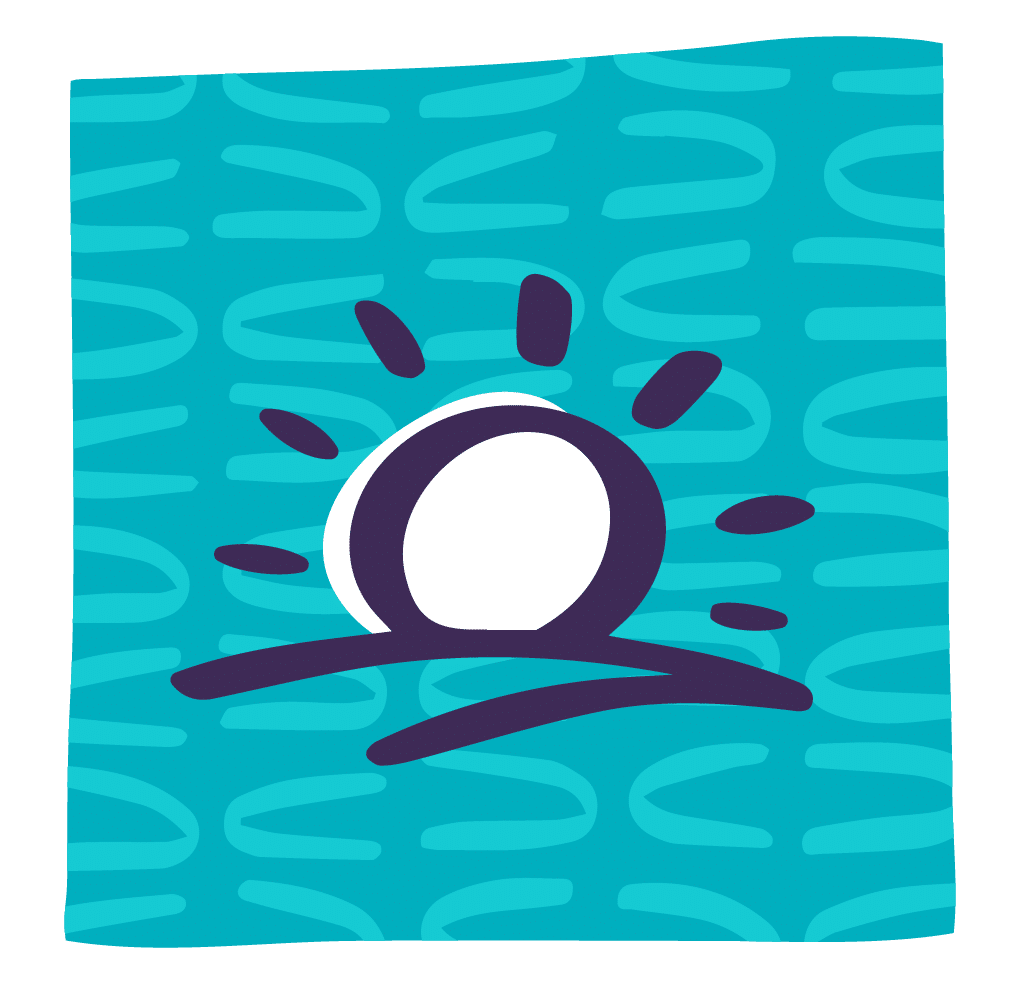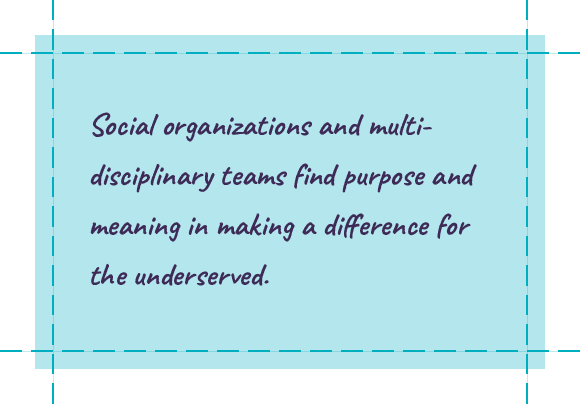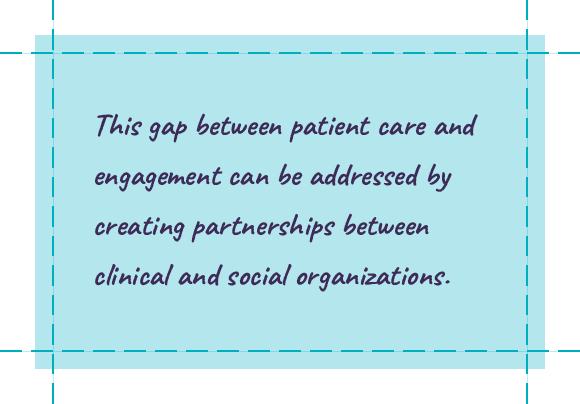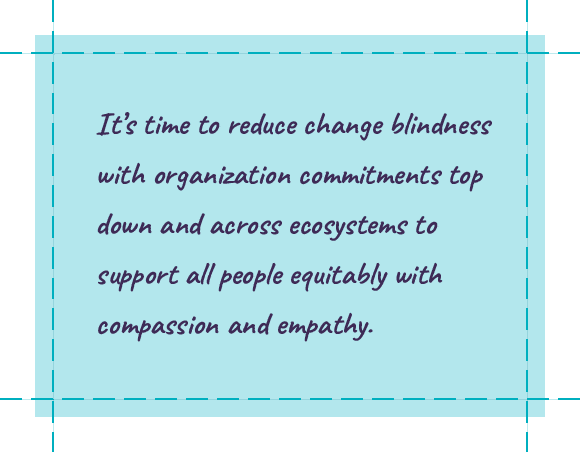A Lot Happens Between Sun Up and Sun Down

Community Care Partnerships Advance SDOH Initiatives
Health-related social needs and social determinants of health are priorities of CMS and the Joint Commission. As a result of these initiatives, community care partners that include government, payers, HIEs, CIEs, hospital systems, ACOs, MCOs, and community health centers are joining to address health disparities and advance health equity.
NinePatch® Whole Person Care, RIE™, and Community Convener Services bridge interoperability gaps. Our SDOH software simplifies care coordination and referrals for vulnerable and underserved populations.
A lot happens between sun-up and sundown for individuals facing health or social concerns and for their providers. A patient seen today in a doctor’s office may be hospitalized tomorrow.
When social organizations provide instructions about access to food, employment, transportation, or housing, they do their best to monitor each client’s progress. However, it can be difficult to keep track of care partner involvement and who is doing what without a coordinated closed loop referral system to manage care.
Healthcare is a Business While
Health Care is Personal
While healthcare is a business, health care is very personal for each patient. Social determinants of health are non-medical circumstances that influence health.
SDOH (social determinants of health) include income, housing, education, transportation, and service eligibility. Long wait lists to access medical care or community services can place a person’s well-being or safety at risk.
Healthcare organizations that have relationships with community-based organizations benefit from coordinating efforts. Physicians gain brief snapshots of patients’ needs during a ten or fifteen-minute doctor appointment. But if patients don’t show up regularly for medical appointments, providing ongoing care can be challenging.
Community organizations may see individuals multiple times to address a single need. This frequent contact allows social care providers to share insights with clinicians about daily issues. SDOH circumstances, like unemployment or homelessness can impact chronic disease management and result in unnecessary hospital readmissions.
The Benefits of Cross-Sector Care Collaboration
Do you or your staff spend hours completing paperwork, making phone calls, or researching services to assist with medical or social needs? Are you unfamiliar with community services or uncomfortable making referrals to medical offices because there’s no way to know the outcome?
NinePatch Whole Person Care and RIE simplify cross-sector collaboration. Care coordination, assessments, consents, closed-loop referrals, and access to community care partners are program features that offer peace of mind.
Using SDOH software allows multi-disciplinary teams to increase efficiencies, improve outcomes, and lower care costs for underserved populations. In addition, providers participating in value-based care manage patient risk adjustment factors (RAF) that require yearly health reassessments.
More importantly, regular patient contact with clinicians is necessary for risk stratification. Ongoing physician-patient visits allow providers to identify the right level of care and services across care partner organizations.


Results of Coordinated Care Efforts
Individuals experiencing economic issues are less likely to participate with the healthcare system. This gap between healthcare access and patient engagement can be addressed by creating partnerships between clinical and social organizations.
For example, to support clinical needs, social providers can schedule transportation for clients to attend doctor appointments, ensure food is available, and confirm that prescription medications are taken.
Health related social needs care coordination software supports regular contact between individuals and care partner teams. Sharing information gathered during multiple provider interactions supports risk stratification efforts to identify and advance care coordination across physical health, behavioral health, mental health and social needs.
The closed loop referral feature in NinePatch Whole Person Care and RIE software helps clinical and social organizations close gaps between social care and patient engagement. For example, a client diagnosed with type 1 diabetes can be referred to a diabetes educator, a nutritional counselor, and a food bank. The software sends, confirms, and reports on the status of the referral.
Ongoing coordinated care efforts address aspects of chronic illness, such as isolation, fear, and worry. For example, a home visit by a community-based organization might identify concerns that a patient would not feel comfortable discussing with a primary care doctor. A visiting nurse may be able to explain the importance of taking medications for a health condition.
Access to a 360-degree view of health, social, and behavioral needs can streamline community care partner communication. In addition, early identification and management of social determinants can stabilize day-to-day factors that increase health costs.
Addressing health related social needs happens when health and community care partners collaborate to:
- Advance communication across healthcare and social ecosystems—organizations and programs working alone cannot solve health and social care gaps
- Understand that clinical value-based care and social care organizations have similar goals—even though the language and terminology spoken by one or the other may seem like they don’t fit together
- Support a “no wrong door” approach across federal, state, and county government, healthcare providers, payers, and social organizations
- Coordinate screenings, referrals, and care coordination—even though different business models and strategies exist for community care partners
-
- Establish governance programs that create shared goals and build long-term community care partners relationships that are financially sustainable
-
- Prioritize interoperability to end delays in data
exchange by eliminating mandates for the use of one platform over another—sharing data access is the goal
- Prioritize interoperability to end delays in data
-
- Identify and quantify the relationships between
SDOH, chronic disease, and functional limitations
- Identify and quantify the relationships between
-
- Establish trusted relationships with patients to increase participation in self-directed care
- Minimize duplication of effort and fast-track closed
loop referrals by knowing the organizations and persons involved in coordinating care
- Share approaches to screening, data sharing, aggregation, and performance measures that impact quality improvement and cost
- Understand the importance of relating Z codes to ICD-10 and treatment codes that support whole person care and reimbursements
Clinical and Community Care
Partnerships Are the Solution
Government, health, and social organizations who extend invitations across the aisle can create roadmaps to eliminate barriers and access to health care for all.
Daily routines, time pressures, and a consistent focus on results can decrease the time for human interaction. For example, patients feel ignored at visits when doctors look at computer screens instead of speaking to them.
While health and social care providers are outer-focused on clients and patients, they are similarly impacted by social determinants of health and chronic disease. Working in high-velocity environments and trying to keep up with industry changes can be stressful. It’s easy to miss changes that can impact daily efforts.
Bringing diverse community care partners together—similar to creating a Nine Patch quilt—happens when health care becomes personal. Organizational commitments—top-down and across ecosystems—can support people equitably with compassion and empathy.
We convene clinical and community care partnerships at NinePatch to support learning and growth. These collaborative relationships that celebrate successes and learning experiences deliver a more significant impact than any single individual or organization can achieve alone.
We invite you to join us to create nationwide community care partnerships across all health and social care ecosystems.
Request a Software Demo Today.

